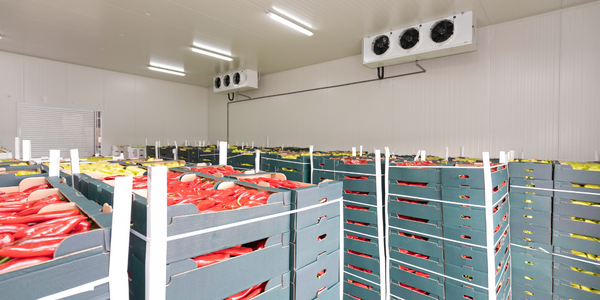Technology Category
- Application Infrastructure & Middleware - API Integration & Management
- Platform as a Service (PaaS) - Application Development Platforms
Applicable Industries
- Railway & Metro
- Transportation
Applicable Functions
- Maintenance
- Product Research & Development
Use Cases
- Autonomous Transport Systems
- Transportation Simulation
Services
- Cloud Planning, Design & Implementation Services
- System Integration
About The Customer
Alstom is a global leader in the rail industry, providing rolling stock, services, and signaling, as well as mobility solutions to a world undergoing profound change. The company is more than just a supplier of means of transportation; it is a key player and a forerunner of tomorrow’s mobility, which must be efficient, sustainable, and digital. Alstom's business is organized around three divisions: rolling stock manufacturing, signaling, and maintenance. Each of these divisions is steering the development of high value-added digital applications that continually enrich the rail service offered by the Group to its customers, whether they are operators, infrastructure managers, or transport authorities. The company's strategic plan for 2025 focuses on providing smarter and more sustainable mobility.
The Challenge
Alstom, a leading rail company, is committed to providing sustainable and digital mobility solutions to a world undergoing significant change. The company's strategic plan for 2025 focuses on providing smarter and more sustainable mobility, which necessitates the acceleration of its digitalization efforts. Alstom operates across the entire value chain, from high-speed trains to onboard systems, and is organized around three divisions: rolling stock manufacturing, signaling, and maintenance. Each division is developing digital applications to enhance the rail service offered to its customers. Key objectives include ensuring the punctuality of transport services, improving fleet orchestration, providing high-quality information on intermodality, and enhancing safety. Alstom also aims to reduce the environmental impact of its operations through digital services that identify sustainable solutions. However, the company faced the challenge of rationalizing its infrastructure and capitalizing on rapid innovation.
The Solution
To address these challenges, Alstom decided to centralize all its applications on a single Software as a Service (SaaS) platform, based on Microsoft Azure technologies. This digital services platform connects previously siloed services and facilitates scaling to meet increasing customer expectations in an agile, cross-functional way. Applications are no longer hosted on servers, but directly in the secure Microsoft Azure cloud. The cloud's strength lies in its ability to facilitate the adoption of a data-centric approach, as data is centralized, accessible, and instructive. This enables a new form of shared governance to capitalize on this wealth of information. The SaaS platform also provides Alstom teams with greater visibility on usage and adoption data for the tools they developed, enabling them to better understand how the tools are used and to continually optimize their offering. Alstom also worked with Capgemini to define the Target Operating Model and all the processes required to operate the platform.
Operational Impact
Quantitative Benefit

Case Study missing?
Start adding your own!
Register with your work email and create a new case study profile for your business.
Related Case Studies.

Case Study
Airport SCADA Systems Improve Service Levels
Modern airports are one of the busiest environments on Earth and rely on process automation equipment to ensure service operators achieve their KPIs. Increasingly airport SCADA systems are being used to control all aspects of the operation and associated facilities. This is because unplanned system downtime can cost dearly, both in terms of reduced revenues and the associated loss of customer satisfaction due to inevitable travel inconvenience and disruption.

Case Study
IoT-based Fleet Intelligence Innovation
Speed to market is precious for DRVR, a rapidly growing start-up company. With a business model dependent on reliable mobile data, managers were spending their lives trying to negotiate data roaming deals with mobile network operators in different countries. And, even then, service quality was a constant concern.

Case Study
Digitize Railway with Deutsche Bahn
To reduce maintenance costs and delay-causing failures for Deutsche Bahn. They need manual measurements by a position measurement system based on custom-made MEMS sensor clusters, which allow autonomous and continuous monitoring with wireless data transmission and long battery. They were looking for data pre-processing solution in the sensor and machine learning algorithms in the cloud so as to detect critical wear.

Case Study
Cold Chain Transportation and Refrigerated Fleet Management System
1) Create a digital connected transportation solution to retrofit cold chain trailers with real-time tracking and controls. 2) Prevent multi-million dollar losses due to theft or spoilage. 3) Deliver a digital chain-of-custody solution for door to door load monitoring and security. 4) Provide a trusted multi-fleet solution in a single application with granular data and access controls.

Case Study
Vehicle Fleet Analytics
Organizations frequently implement a maintenance strategy for their fleets of vehicles using a combination of time and usage based maintenance schedules. While effective as a whole, time and usage based schedules do not take into account driving patterns, environmental factors, and sensors currently deployed within the vehicle measuring crank voltage, ignition voltage, and acceleration, all of which have a significant influence on the overall health of the vehicle.In a typical fleet, a large percentage of road calls are related to electrical failure, with battery failure being a common cause. Battery failures result in unmet service agreement levels and costly re-adjustment of scheduled to provide replacement vehicles. To reduce the impact of unplanned maintenance, the transportation logistics company was interested in a trial of C3 Vehicle Fleet Analytics.

Case Study
3M Gains Real-Time Insight with Cloud Solution
The company has a long track record of innovative technology solutions. For example, 3M helps its customers optimize parking operations by automating fee collection and other processes. To improve support for this rapidly expanding segment, 3M needed to automate its own data collection and reporting. The company had recently purchased the assets of parking, tolling, and automatic license plate reader businesses, and required better insight into these acquisitions. Chad Reed, Global Business Manager for 3M Parking Systems, says, “With thousands of installations across the world, we couldn’t keep track of our software and hardware deployments, which made it difficult to understand our market penetration.” 3M wanted a tracking application that sales staff could use to get real-time information about the type and location of 3M products in parking lots and garages. So that it could be used on-site with potential customers, the solution would have to provide access to data anytime, anywhere, and from an array of mobile devices. Jason Fox, Mobile Application Architect at 3M, upped the ante by volunteering to deliver the new app in one weekend. For Fox and his team, these requirements meant turning to the cloud instead of an on-premises datacenter. “My first thought was to go directly to the cloud because we needed to provide access not only to our salespeople, but to resellers who didn’t have access to our internal network,” says Fox. “The cloud just seemed like a logical choice.”



